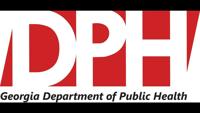ATLANTA — Drug prices and who controls them could be back before the General Assembly this winter, as consumer advocates and pharmacy benefit managers remain at odds over issues such as drug price transparency.
Gov. Brian Kemp signed legislation last year tightening rules on third-party companies that play a role in negotiating pharmaceutical drug prices between insurers and local pharmacies in Georgia.
The bill Kemp signed into law requires companies called pharmacy benefits managers (PBMs) to set drug prices within a national average, a move aimed at reining in excessively high prescription prices.
PBMs act as go-betweens for prescribers and insurance companies that contract with health insurers to negotiate lower drug prices for patients. But critics have long accused them of muddying the process, prompting increases in drug prices and delays in filling prescriptions.
Now, pharmacies such as CVS are worried Georgia lawmakers, when they reconvene in January, may take further action on drug pricing.
“We are aware of efforts by some legislators to further explore drug pricing transparency,” said Leanne Gassaway, vice president of state government affairs at CVS Health. “Given the state’s enactment of PBM-related legislation nearly every year over the past decade, we would welcome the legislature to closely examine drug manufacturers’ role in drug pricing, including a notable lack of transparency in setting and increasing list prices.”
Ryan Hamilton, an associate professor at Emory Goizueta Business School, said price transparency typically causes drug prices to fall.
“The easier it is for customers to acquire price information, the greater the need for manufacturers to compete,” he said. “But the prescription pharmaceutical industry in the U.S. is so heavily regulated, those general rules may not apply.”
Hamilton said PBMs serve as an interface between drug manufacturers and pharmacies.
“Any measures to cut out middlemen from the equation are naturally going to cause protests,” he said.
“PBMs support and practice actionable transparency that enables patients, their physicians, and health plan sponsors in Georgia to make informed decisions on how best to manage prescription drug costs and empowers Georgia’s policymakers with the information they need to make the right policy decisions to lower drug costs for all patients,” said the Pharmaceutical Care Management Association, an organization which represents PBMs. “In Georgia, PBMs will save health plan sponsors and patients nearly $30 billion on prescription drug costs.”
Laura Colbert, executive director of Georgians for a Healthy Future, agreed the issues of drug prices and transparency, coupled with the role PBMs play in the equation, will come up again in January.
“Discussions over PBMs have been going on for several years, and the legislature seems pretty fired up over continuing that effort,” Colbert said, explaining that PBMs were formed to help health insurers negotiate better deals with pharmaceutical manufacturers, and then pass those savings along to consumers.
“But realistically, it’s hard to know if those savings are actually being passed along,” Colbert said. “Pharmacies and health insurers are buying up PBMs, and it’s become especially hard to see where savings are being accumulated.”
One bill that will definitely carry over into January is House Bill 164, entitled the Prescription Drug Consumer Financial Protection Act. It would require health insurers to pass along no less than 80% of all prescription drug rebates to their enrollees.
“That 80% is consistent with what the Affordable Care Act requires,” Colbert said.
“We’ve been having some very fruitful discussions and we’re anticipating a very active legislative session,” said Gassaway, who is tackling a tough public relations challenge: convincing lawmakers and their constituents that making drug prices openly and readily available to the general public will, in fact, lead to higher drug prices.
“If we just put the prices out in the public domain, that information will be used to further manipulate the market,” she said. “We are not opposed to showing our clients how much we save them on drugs. We try to push that price down but putting a specific discount out into the public domain will only cause prices to rise.
“We have some other, great ideas on how to make that information available to patients in more useful ways.”
One of CVS Health’s ideas is making drug prices available, in real time, to doctors when they’re prescribing medications. “We have the ability to make that information available at the physicians’ fingertips, to determine the best prices,” Gassaway said. “That kind of information – such as cost-sharing alternatives – would be really helpful to patients.”
Gassaway touts CVS’ member-specific benefit information, which includes plan information, deductibles and other data that, the company said, lets health-care providers and CVS members know if a specific drug is covered as well as the member’s cost.
CVS said Georgia has some of the strictest PBM laws in the country. PBMs are now required to publicly report how close to a national average many health plans’ drug prices were negotiated. The state is also requiring PBMs to give state officials some confidential information on rebates and other negotiating tools.
PBMs are also now required to submit to new audits by the state Department of Community Health as well as requirements for publishing data on prescription prices online. They are also required to offer full rebates to health plans that are typically given by drug makers, rather than pocketing a portion.











(0) comments
Welcome to the discussion.
Log In
Keep it Clean. Please avoid obscene, vulgar, lewd, racist or sexually-oriented language.
PLEASE TURN OFF YOUR CAPS LOCK.
Don't Threaten. Threats of harming another person will not be tolerated.
Be Truthful. Don't knowingly lie about anyone or anything.
Be Nice. No racism, sexism or any sort of -ism that is degrading to another person.
Be Proactive. Use the 'Report' link on each comment to let us know of abusive posts.
Share with Us. We'd love to hear eyewitness accounts, the history behind an article.